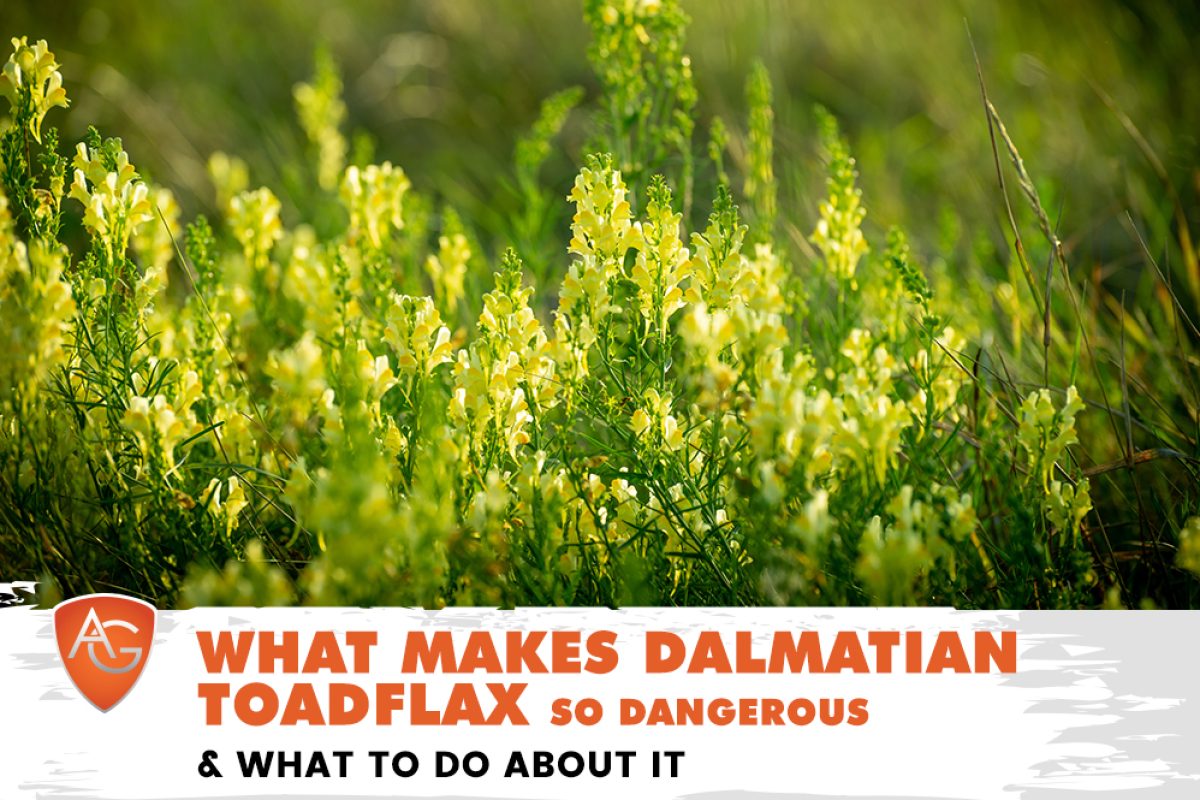Overview: Dalmatian Toadflax is one of the most aggressive noxious weeds threatening pastures in Laramie County and Wyoming. Learn what makes it so persistent — and how to keep it from taking over your land. Read on!
If you’ve spotted clusters of tall yellow flowers popping up along your pasture edges this spring, don’t ignore them. Dalmatian Toadflax might look harmless, but it’s one of the most persistent and damaging noxious weeds in the High Plains and Mountain West — especially here in Laramie County, Wyoming, and Cheyenne..
Let’s learn more about it!
Why Dalmatian Toadflax Is a Problem
This perennial invader spreads fast — by seed and by creeping roots — and creates dense colonies that choke out native grass and reduce usable forage. Once it takes hold, it’s tough to control and even tougher to eliminate.
Here’s what makes it especially dangerous to your pasture:
Deep Root System: It can reach down 6 feet or more, pulling moisture away from surrounding grass and making it drought-tolerant.
Aggressive Spread: Each plant can produce thousands of seeds, and the creeping roots allow it to re-sprout even after mowing or burning.
Unpalatable to Livestock: Cattle, sheep, and horses tend to avoid it. That means valuable grass gets grazed down while the weed keeps growing.
Over time, this leads to overgrazed patches, erosion, and a major decline in pasture productivity.
>> Related Reading: What Are the Common Problems with Dalmatian toadflax
Where You’ll Find It
Dalmatian Toadflax prefers:
-
Dry, well-drained soils
-
Roadways, pastures, and rangeland
-
Disturbed sites or overgrazed areas
It’s especially common along fence lines and in sandy or gravelly soils across areas like Cheyenne, Pine Bluffs, Wellington, and western Larimer County.
What You Can Do About It
Controlling Dalmatian Toadflax takes patience and the right approach. Here are some options landowners are using locally:
Early Detection: Scout your fields regularly in spring and fall. Catching young plants before they flower makes control more effective.
Targeted Herbicide: Broadleaf herbicides applied at the right time (often early bloom) can suppress growth, especially with follow-up applications.
Preserve Healthy Grass: Maintain good grazing practices and avoid overgrazing — strong grass competition can slow the spread.
Record & Rotate: Keep notes on where patches occur and rotate grazing or treatments to give your grass a chance to recover.
Long-Term Considerations
There’s no one-size-fits-all answer. Controlling toadflax usually takes several seasons — and the longer it’s left alone, the harder it is to manage. Many landowners in our region combine grazing plans, weed monitoring, and spot treatments to keep it in check without damaging native grass.
If you’ve noticed those yellow flowers creeping in, it’s worth paying attention. The sooner you spot it, the simpler the fix. Speaking of which, we’re here to help!
